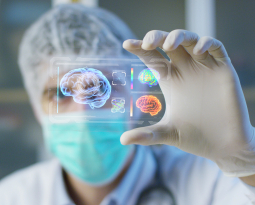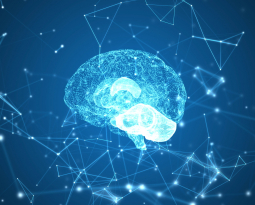
The Neurology of Postural Movements
The neurology of motor movement is more complex than we often give credit to. Think about it, when was the last time you consciously thought about each movement required to make a coordinated gait pattern?
Walking requires the movement of two legs and two arms while keeping the head, neck, and trunk in postural balance over a moving base of support.
Motor movement is an integration of functions from the motor cortex, the basal ganglia, the cerebellum, and the brainstem. The primary voluntary pathway for movement is a contralateral system. Simultaneously postural stabilization tracts descend ipsilaterally.
Postural control is primarily controlled by the ponto-medullary reticular formation in the brainstem, gait is primarily controlled by the brainstem and spinal regions although it requires output from other higher order anatomy such as the motor cortex.
Postural control is orientation and balance. Orientation refers to verticality of the body in relation to the floor, and balance is the ability to maintain verticality while making dynamic movements. Balanced equilibrium of the Posture System is the ability to keep the center of mass of the body over the feet, which are the relatively small base of support in comparison to the rest of the body.
The descending reticulospinal and the vestibulospinal tracts, which originate in the PMRF of the brainstem control postural motor output. Together these two tracts inhibit flexion and facilitate extension, which is exactly what we want to happen with Postural Neurology.
During stance, even when the patient is seemingly standing still, their Posture System is always active, making small postural adjustments to maintain upright posture. With inappropriate sensory input, the body over or under stabilizes creating postural distortion patterns or uncoordinated balance.
When moving from stance to gait, important neurologic changes take place. Consider how neurology supports ambulation of the Posture System:
- The frontal lobe provides goal orientation and the motor cortex controls ankle movements
- The basal ganglia generates a proper amount of force
- The cerebellum provides timing and coordination
- The brainstem pathways control upright postural stabilization with movement
- The spinal cord contains Stepping Pattern Generators, which are neural networks to control the pattern of lower limb muscle activation appropriate for walking
- The Sensory cortex adapts motor output as necessary within the environment for coordinated gait
There is a lot of brain activation required to coordinate gait, a seemingly mindless task. And although gait seems to happen naturally or automatically, it does require attention.
Think about it, how does your gait change when you alter gait from its natural state. Does your gait pattern change when walking with a cell phone, or a heavy bag pulling on one shoulder, or how about in the dark?
Gait and postural control require specific inputs of the neurologic system. When working with patients consider how valuable it is to understand the neurology of their Posture System for more intentional and specific postural correction.

















